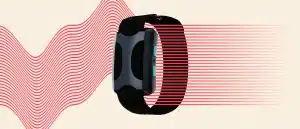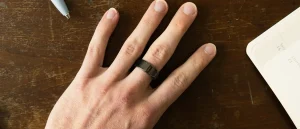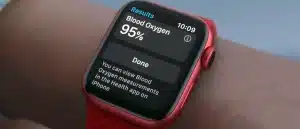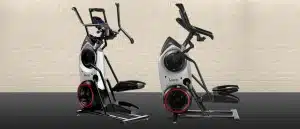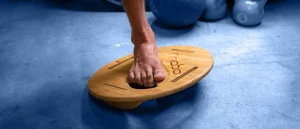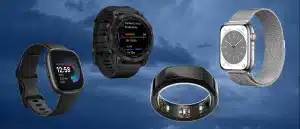Our Honest Review of the Oura Ring
Oh, wearables, how could we live without you? For most people, I imagine pretty well, but the latest generation of the technology has been designed from the ground up meant to bridge a gap. The gap, for those new to wearable health trackers, is the space between how cool is it that my watch knows my heart rate? and wait, what do I do with any of this information?
The Oura Ring Gen3 is one of these new age wearables. It tracks all sorts of metrics, reports it all to your phone, and most of the data you receive is, so far as we can tell, accurate. But it’s also expensive and it’s not an Apple product.
What is it and is it worth considering? I wore one for six months to find out. Here’s what you need to know.
Why Trust Me?
I’ve spent nearly a decade finding, testing, and reviewing tech products, including dozens of different wearables like the Oura Ring. Insights and opinions in this review are based on wearing the ring for six months and taking notes on what works, what doesn’t, and everything in between.
What Is the Oura Ring?
Oura Smart Ring originally launched on Kickstarter in 2015, but the Generation 3 ring—the one I wore for review—was announced near the end of 2021.
What does the Oura Ring track?
The third generation of the Oura Ring added 24/7 heart rate monitoring, blood oxygen reading, and period prediction (which I can’t physically test, but, if it works, is a really nifty feature). It tracks sleep, sleep stages, sleeping hours, naps, and body temperature. It also supports daily activity tracking for those exercises you can wear a ring through (mostly cardio).
The device works using infrared LED lights that, in tandem with proprietary algorithms, reflect against the finger’s skin to track the internal body changes mentioned earlier.
The company is extremely well-funded and purportedly has sold more than 1 million rings to date.
Oura Ring: Heritage vs. Horizon
The Oura Ring comes in two styles—Heritage and Horizon. The differences are aesthetic, not functional. The Heritage has a flat top and is a bit thinner than the Horizon, which is a completely round ring. The Horizon starts at $349 and the Heritage starts at $299.
I wore a Heritage ring for this review, but the Horizon seems to have been designed slightly larger to stay in place on the finger more easily. Admittedly, this wasn’t a real issue for me.
How Much Does Oura Ring Cost?
The Gen 3 Heritage Oura ring ranges from $299 to $549 depending on the style and finish. And that doesn’t include the monthly membership of $6 a month (which is free for the first month). The Horizon Oura Ring starts at $349 with the same monthly membership dues.
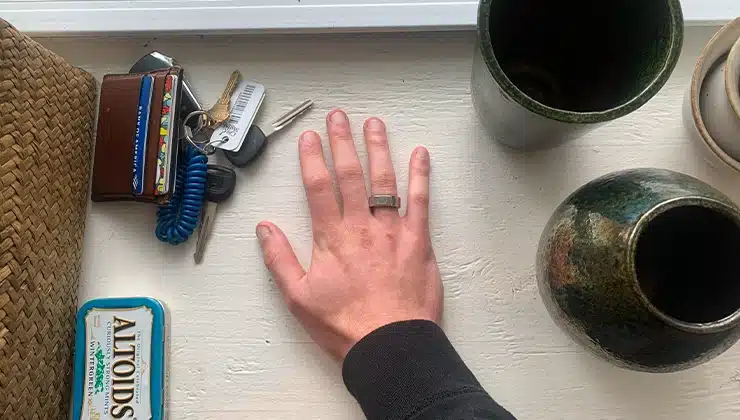
What’s Good About the Oura Ring?
A+ sleep tracking
I was more satisfied with the Oura Ring’s sleep tracking tech than any other tracking category it offers. One of the troubles with sleep quality tracking is that the numbers are often difficult to interpret. OK, so I got 2.5 hours of REM (rapid eye movement) sleep last night, what of it?
Oura tracks awake time, REM sleep, light sleep, deep sleep, total sleep, resting heart rate, sleep efficiency, oxygen saturation, breathing regularity, HRV, and god knows what else. Mercifully, I don’t have to look at every single data point (you can if you want, it’s all in the app), because all those numbers are crunched into a sleep score, which takes every data point into account and spits out a simple 0-100 number—under 70 is bad, 70 to 84 is good, 85 and up is optimal.
This is where Oura Ring is at its best—collecting complex health data and simplifying it. Yes, the little graphs tracking when and for how long you sunk into REM sleep are interesting initially, but it’s the quick reference that you return to time and again. That’s how you build a habit, which is exactly what health-tracking wearables are meant to do.
As an aside, the sleep tracking abilities of the Oura Ring feel especially good after reading our review of the Ultrahuman Air, Oura’s biggest competitor at the moment, which struggles mightily in this department (and others). Here’s a complete head-to-head review between the Ultrahuman and Oura ring if you’re interested in learning more.
Blends in seamlessly
There are a few more nuanced differences between the Oura Ring and other health trackers, but the biggest is also the most obvious: it’s a freaking ring.
I don’t judge those who like their smartwatches, but I’ve grown too attached to my humble Seiko 5 Sport to wear one. Thus, the Oura Ring is perfect for me, because it does most of what the Apple Watch and its competitor do, but only takes up a spot on my finger. And the ring looks good. Well, it looks like a rather nondescript ring, which works. It can smudge a little easily, but it’s hardly noticeable unless you shove it in someone’s face.
It’s also good for folks who don’t like watches at all, which is a fair number of folks.
App works flawlessly
I had zero issues with app connectivity, updates, or navigation. I can’t tell you how rare that is with any apps, much less an app not designed by a major tech company.
The home screen highlights notable figures like a particularly high-calorie burn and offers plenty of real estate to explain new features associated with firmware updates. Then there’s a screen for each of the three primary categories the ring tracks—Readiness score (stress, activity, and rest), Sleep score (exactly what it sounds like), and Activity score (exercise and movement). There’s also a screen called Explore that’s a well of guided breathing exercises, meditations, learning programs, and so on.
Moving through it all is very simple, which is exactly what it should be.
Shockingly long battery life
There really isn’t much to say here. The battery is wicked powerful. Over the course of three months, mine averaged exactly 6 days of use before needing to grab the charger. The website says it should last between 5.5 and 7 days, so 6 seems average on the whole.
I hesitate to compare it to its smartwatch competition because the Oura Ring has a lot less going on (and subsequently far fewer features), but for the record, I’ll say that most smartwatches run for about 12 to 20 hours per charge. Make of that what you will.
What’s Not Good About the Oura Ring?
Below average fitness tracking
There’s really no way to sugarcoat it: The Oura Ring isn’t a good fitness tracker, and the reasons why are numerous. These are the three biggest reasons.
First, it doesn’t have a display of its own. If you’re wearing an Apple Watch on a run and want to check your heart rate, you can do so with a couple finger swipes, barely breaking a stride. The ring obviously does not have a screen, so you’d have to pull your phone out, go to the app, and find the info you’re looking for there. This would be an even bigger deal if not for the second, and significantly more disappointing, fitness tracking fail.
There is no real-time fitness tracking, which makes the fact that there’s no way to quickly check the pace you’re running or, again, your heart rate a moot point because, well, that info wouldn’t be there even if it did have a little ring-sized screen onboard. The lack of real-time fitness data is a huge bummer for anyone who’s regularly putting themselves through elevated heart rate exercises, which should be everyone.
The final nit I’d like to pick is perhaps a bit unfair, but it’s a problem nonetheless: weightlifting seemingly does not count as exercise according to Oura, which I suppose is only surprising until you realize you can’t wear the ring during a lifting session anyway.
Try deadlifting with a ring on. Spoilers: it doesn’t go well. So not only is a ring a detriment to a massive exercise category in the first place, but the app—which only measures activity through steps and heart rate variability—wouldn’t record a heavy lifting session as a workout anyway. Kind of bizarre.
Membership costs
You get six months of Oura’s membership program “free” with the purchase of the ring. Those six months are baked into the $299 purchase price, and after that period you’ll need to pay $6 a month for the app to be of any use (almost all functionality is tied to the membership).
This is not completely unique in the smart wearable world, but it is a pain in the ass and yet another example of an already expensive product demanding even more money from its customers. Now that we’re seeing subscription models bloom in nearly every consumer category (cars with built-in seat heaters that are only usable with a monthly subscription, for example), perhaps this won’t bug everyone as much as it bugs me. But damn if I don’t hate it.
The Experience
Sizing things up
The Oura Ring experience begins with getting a ring that fits you. Having read some customer reviews as well as reviews from other websites, it seems a lot of people find the sizing kit—which is just a box with various ring sizes—rather tedious. I’ll just say that it wasn’t for me, and I’m not sure what anyone buying a ring expected. If you know your size you can order it without the kit and get the ring in a few days; if not, the process takes about a week and a half. Really not all that bad to ensure the product works.
Setup and a slight learning curve
Connecting the ring to the app takes about 10 minutes all told. Download the Oura app, go through the guided step-by-step Bluetooth connection process, and type in some personal info about your body and habits. All very simple.
Somewhat embarrassingly, the learning curve had more to do with learning how to wear a ring than it did with learning how to use the app. I’m an unmarried man, so I’ve never really worn a ring before, thus remembering to put it on after I took it off to, say, wash my hands, was not always easy. Also worth noting for my fellow non-ring-wearers: your fingers are dramatically different sizes throughout the day. I could barely slide the thing off in the morning but at night my fingers could be mistaken for a toddler’s. The more you know, I suppose.
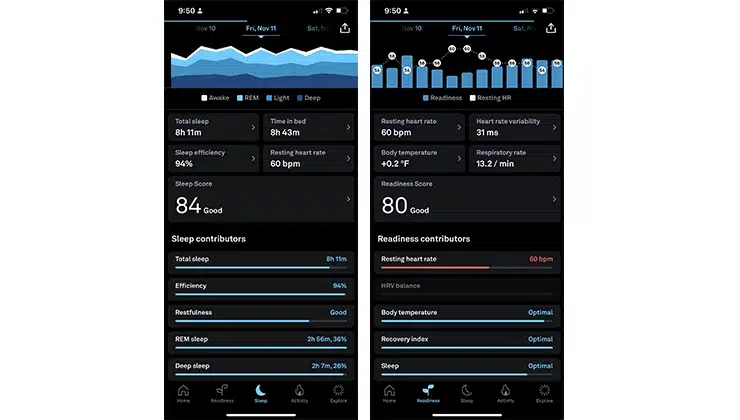
Workout woes
Without getting into detail, I’ll just say you’re better off not trying to deadlift with a ring on. Also, don’t curl either. And probably just don’t pick up weights at all, because a $299 piece of titanium on literally any one of your fingers is a huge detriment to any weightlifting, and that is a huge bummer. If you’re wondering why, it’s pretty much down to the grip; lifting heavy loads places a ton of strain on your hands, and the ring makes doing so dangerous.
Beyond the weightlifting dilemma, I found myself annoyed again. There is an “Activity” section of the app that tracks things like steps, BPM, heart rate, etc. But sadly that section doesn’t update in real-time as many fitness trackers do, so it’s more of retrospective tool than a true tracker in my eyes. Yes, it’s nice to see how many steps I got each day this week, but my phone was already recording that anyway. I’d rather be able to set my jogging pace and follow heart rate fluctuations as they happen, as you can easily do with the Apple Watch and other modern smartwatches.
Generally speaking, I would not recommend the Oura Ring to anyone for fitness purposes. Its features in this realm are five or six years behind at least.
Sleep habits
So the early days of the Oura Ring were not great. That’s OK, not all new tech is great. Then I started paying attention to the section of the app that’s recording when you’re passed out: the sleep section.
I should note that I refuse to wear a watch to bed. I move around quite a bit at night and, in a fit of sleepy flailing, have on more than one occasion smacked my partner in the head with a steel watch. I also find watches—even the Apple Watch, FitBit, and other smartwatches—generally uncomfortable to wear to sleep. The Oura Ring isn’t uncomfortable to wear anywhere, including to bed. It’s extremely light and hardly noticeable most of the time. So it’s immediately better, for me, than 95 percent of sleep trackers.
The data is more rad. You get a sleep score, which is a simple aggregate of all the data points the ring collects on a single night of sleep. The score isn’t all that interesting in a vacuum—if you sleep for 7.5 hours or more and don’t go to bed horrifically late, you’ll probably get a decent one—but after a few weeks the score collection starts to paint a picture of your sleep profile.
For example, I started my first week wearing the Oura with a slew of scores in the high-70s, which is fine but not great. Looking deeper into those nights, the ring made clear my bedtime of around 12:45 a.m. combined with an eerily consistent 3 a.m. wake were the primary culprits. I often don’t remember when I wake up in the middle of the night and had no clue I was waking up at 3 every morning. Searching for reasons why, I dug into my phone a bit and discovered the reason. Months back I’d set a wakeup time for 3 a.m. for an early flight and never turned it off. So, at 3 a.m. every morning, my phone flashes repeatedly and vibrates a few times.
I turned off the alarm and set another for 12 a.m. sharp—my new targeted time to bed. My sleep scores for that week were all mid-80s or higher (I recorded a 91 once and felt particularly proud of myself). As seemingly obvious as these solutions were, sometimes it takes an outside opinion—or in this case hard data—to change a habit. And that is exactly the aim of all smart health tracking. The data and insights apps provide is the products, but the emergent quality of these tools falls on your shoulders: you have to be willing to change your habits.
A cool feature is that the Oura app will send a notification to assist with sleep timing, reminding you when it’s time to begin winding down for bed.
The Bottom Line
The Oura Ring is a novel and functional baseline health tracker, especially if you’re interested in sleep and heart data. However, it’s not a viable fitness tracker and the $5.99/month subscription to access most of the app’s findings stings.



